What is a laminated motorcycle garment? How does it work?
Published on: 16 March 2022
If you’re an experienced motorcyclist who takes a keen interest in the gear you ride in you may know all about laminated membranes, how they work and what they do. And if this is the case, don’t bother reading any further. Go polish the bike or go for a ride. Because what we are going to talk about now will not be of interest. But there’s still a lot of confusion out there. And there are lots of misunderstandings about what the benefits of laminated membranes are, and what the downsides are.
Before we can understand laminate membranes and how they differ from drop-liner membranes, however, we need to first understand what a waterproof membrane actually is and how it works.
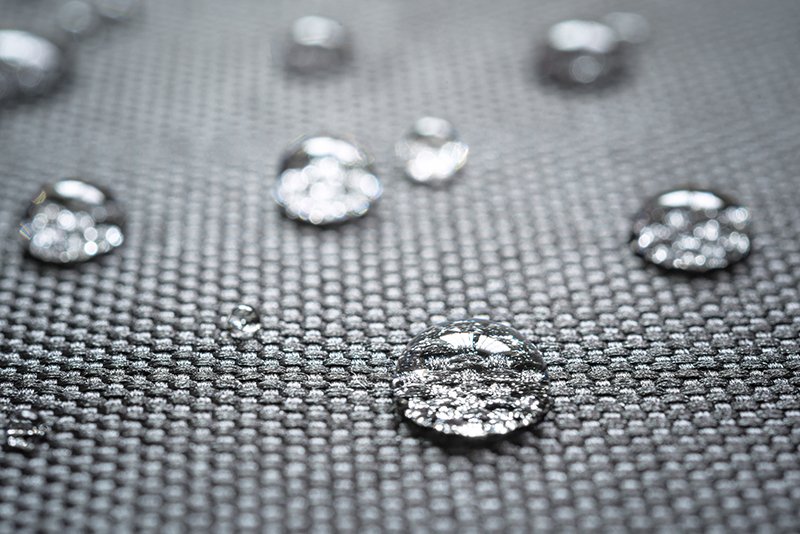
A membrane is a super thin sheet with millions of little holes. The holes are so small the the rain cannot pass through from the outside to reach the body. Thus the rider stays dry. But the holes are sufficiently large to allow our sweat, once it has been transformed from a liquid state into a gaseous state, to pass from the body side of the membrane through to the outer atmosphere. In this way, even as we sweat, we stay dry inside the membrane. If this very thin sheet had no holes in it, the rain would be kept totally at bay, but because our sweat could not escape we would simply get wet from the inside.
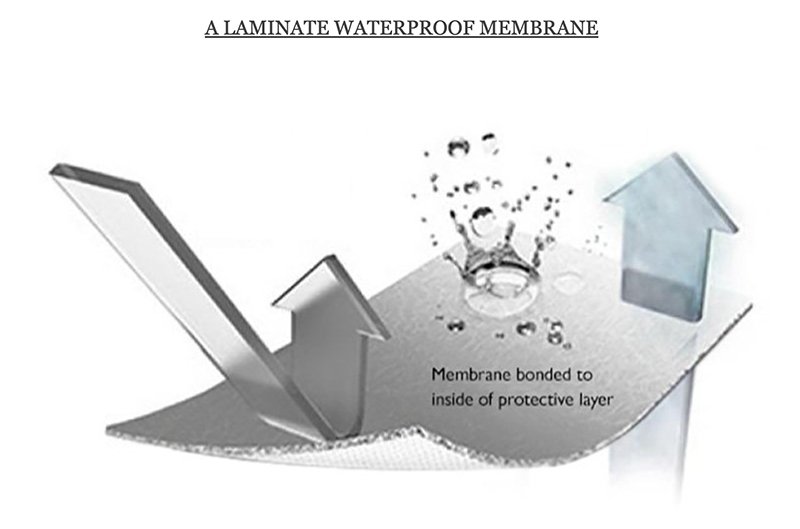
With a laminated garment, the waterproof membrane is bonded, or heat sealed, onto the inside of the outer fabric of the jacket or pant. The membrane is exactly the same as the membrane that you would find on a so-called drop-liner garment. The difference is that in a drop-liner construction the membrane is not bonded to the garment. It is sewn into the shoulders of the jacket, or the waist of a pant, and simply hangs down independently inside the garment.
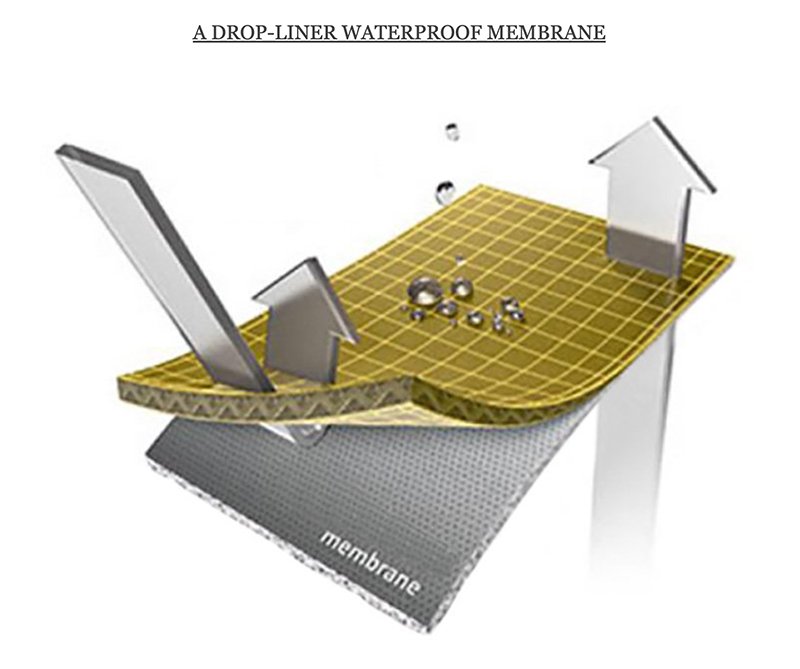
Both forms of waterproofing will keep you dry in the rain. And that’s because, in both cases, the rain will not be able to pass through the membrane and reach the body. The difference between the two forms of construction is that, in the case of a drop-liner product, the water can pass through the outer fabric; through a laminated one it cannot because the bonded membrane prevents it from gaining entry.
A laminated garment, therefore, will not soak up the rain. It will never reach a state that is known as ‘wet out’. This is the point at which a garment becomes totally water logged. A jacket or pant that does not ‘wet out’ will have a number of advantages.
Because the garment will never become soaking wet, it will dry out much more quickly than a drop-liner one. And this is important if you have a daily commute of, say, an hour or so each way. It will mean that, however hard it might have rained on the way in to work, when it comes time to ride home you will be able to put on a totally dry jacket.
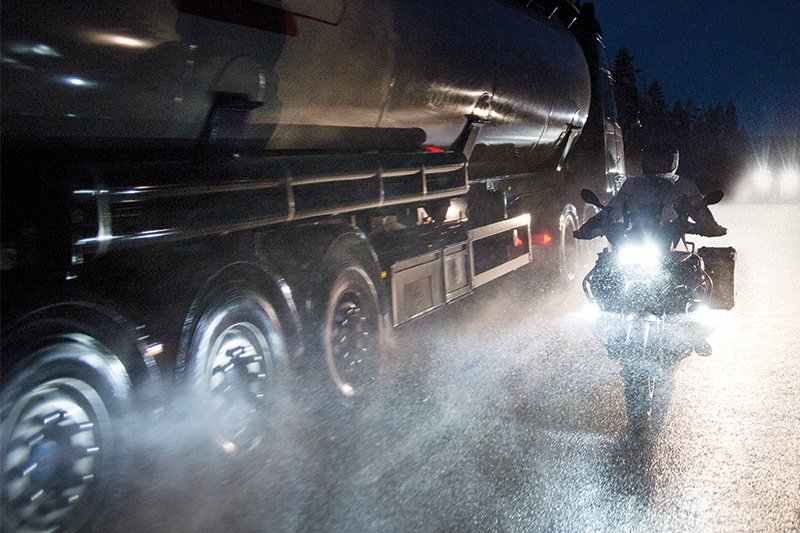
Similarly, if you’re on the road in heavy rain for four or five hours, the garment will stay relatively dry. And this is important because the less water that is absorbed the the garment, the warmer you will be. And that’s because we lose body heat 20 times faster through a wet environment than through a dry one. So, in heavy rain, a laminated garment will be warmer than a drop-liner one. It will, in such situations, be much more comfortable to ride in.
So, actually, the main benefits of laminated garments have little to do staying dry, per se. They derive more from the fact that they take absorb less of the rain.
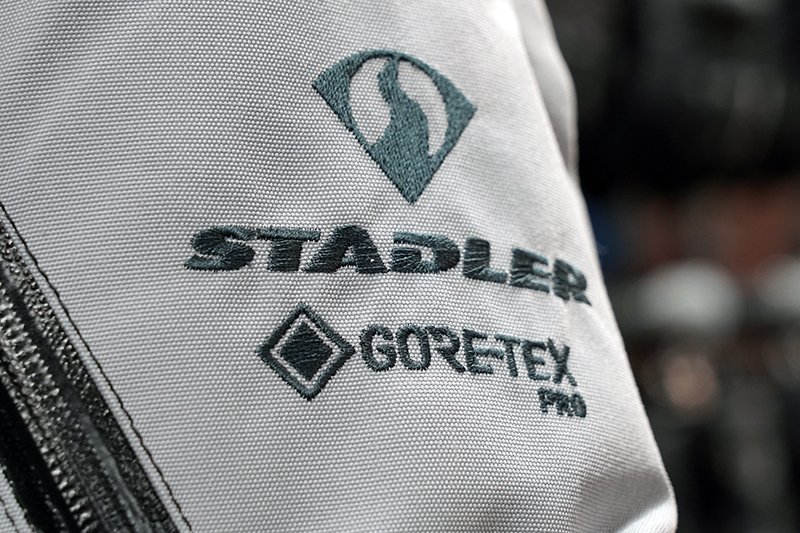
But there are some downsides to laminated products. They tend to be less comfortable because, when you bond a membrane onto, say a Cordura material, it makes it stiffer. Some laminated garments, known as three-layer laminates, then have a third protective layer that sandwiches the membrane. These garments are, as a result, even stiffer. The bottom line is that laminated garments are usually not as nice to ride in as drop-liner garments.
And this is not to be dismissed. A lot of us ride for fun. Riding is a diversion, and we want to enjoy it. A drop-liner outfit will simply be nicer to ride in. It will be more comfortable. We will be more relaxed, and we will be more able to concentrate on the job in hand. We will be more mobile on the bike and, as a result, we will probably ride better.
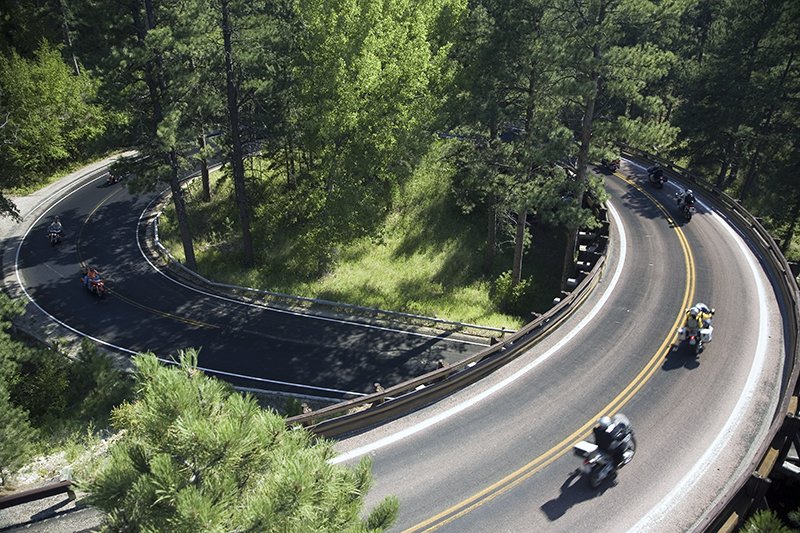
Another factor that can affect comfort is that drop-liner garments are intrinsically warmer. And this is because the air gap between the outer shell and the waterproof membrane is an air gap that will trap body heat and keep the rider better insulated. There is no such air gap with a laminated membrane.
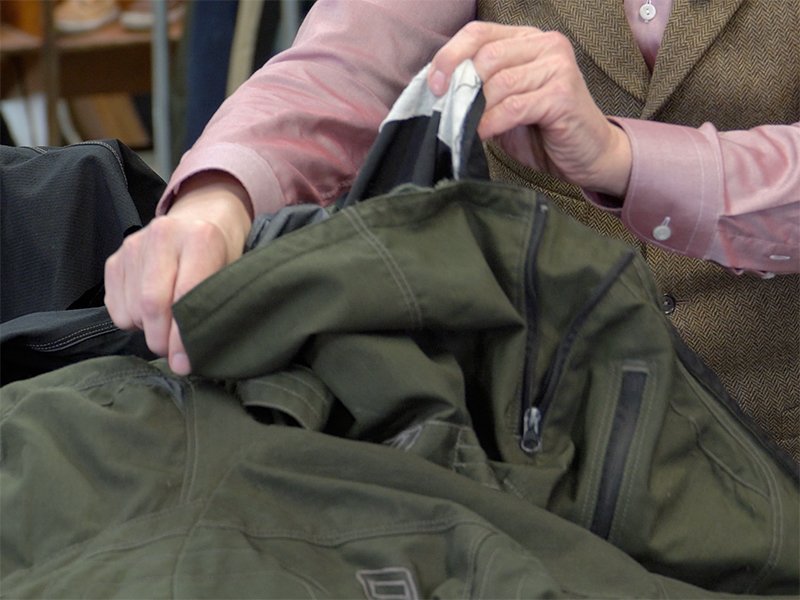
There is, though, one other key benefit of a laminated garment that has nothing to do with waterproofing. Rather, it’s to do with venting. When you unzip a vent in a drop-liner garment, the oncoming or incoming air is impeded by the membrane that hangs behind the fabric. There will still be a cooling effect, but it will not be totally effective. By contrast, because in a laminated garment the membrane is bonded to the fabric, when you unzip the vent the air passes directly through to the body. This is more effective, and so it has to be acknowledged that, say, a four-inch vent in a laminated jacket will flow more air than a four-inch vent in a drop-liner jacket.
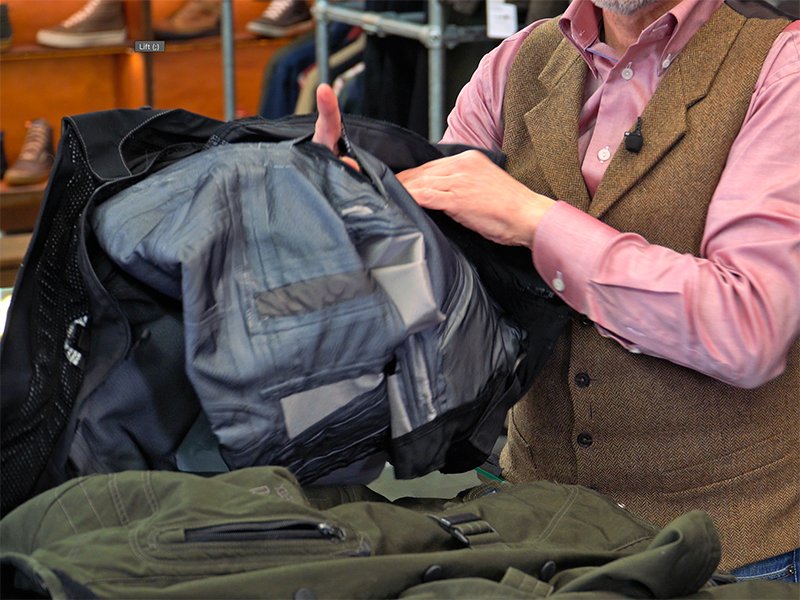
The prime benefit is that laminated garments don’t soak up the rain. This means you will stay warmer in heavy rain. And it means that, as a commuter, you will always have a dry jacket to put on when you come home in the evening. But laminated garments are less comfortable to ride in and, in dry conditions, as opposed to wet ones, they will be less warm. Laminated garments, however, vent more efficiently, so will be cooler to ride in in hotter weather.
Another issue that should not be ignored is cost. Laminated garments are hugely complex to make; or rather they are when they are made properly. They require an enormous amount of taping that needs to be very carefully applied wherever there’s a join in the membrane. To do this as it should be done is labour intensive. It takes time, and so is costly. And therefore, on a like for like basis, a laminated garment will always be more expensive than a drop-liner one.
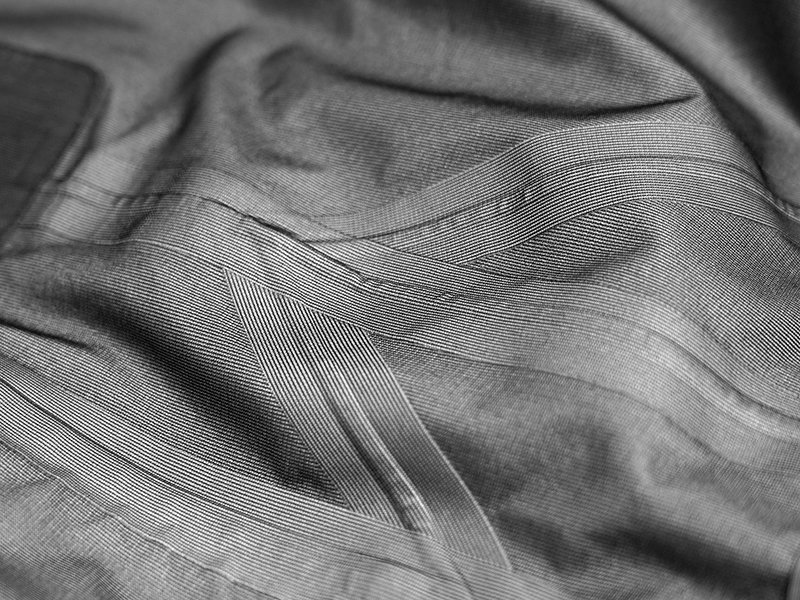
And so a thousand pound Rukka laminated suit, for example, will always be less well appointed than a thousand pound drop-liner suit. The Kalix 2 and the Comfo-R are very much evidence of this. The drop-liner Comfo-R suit has a back protector and thermal liners that don’t come with the laminated Kalix 2.
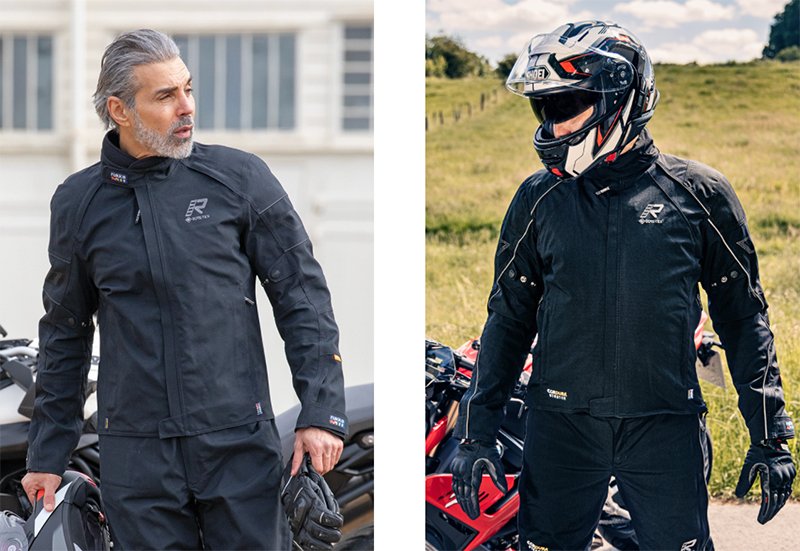
Finally, on the subject of cost there is a truth that needs to be confronted when it comes to laminated suits. For many years, Rukka was the king of laminates. Before Rukka there was Hein Gericke. And historically, laminated outfits were always very expensive. But in recent years, many other manufacturers have jumped on the bandwagon. Some other companies have developed laminated products that work, especially those who work with Gore-Tex. But many, including those who operate at the budget end of the market, have created laminated jackets on the cheap that simply do not work. They might pass muster to begin with, but we know what it takes to make a laminated jacket. Look at the inside of a Rukka jacket. You cannot do all this intricate work and provide a suit that will be breathable, robust, nice to wear and properly protective for a couple of hundred pounds. It just cannot be done.
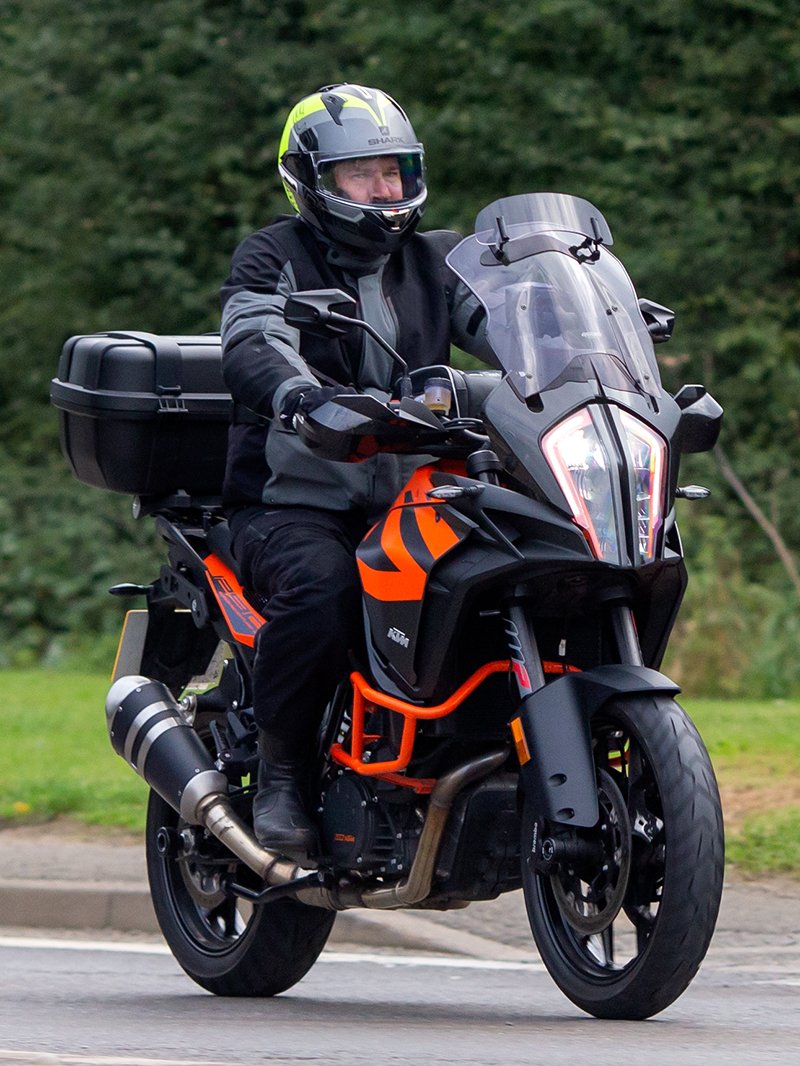
So if you want a laminate suit, go for it. But often if things look too good to be true they are too good to be true. And if you think you can enjoy the benefits of high-end laminated jackets and pants on the cheap, you will be disappointed. It’s a simple matter of commerciality. If a laminated garment is priced like an inexpensive drop-liner garment, corners will have been cut somewhere. That might be in the taping. Or in the outer fabric. With the armour. The zips, or whatever. Expect to pay more for a laminated garment if you want it to work in the way that you would want it to. If your budget is limited, you will nearly always be better off with a drop-liner outfit.
We here at Motolegends are big fans of laminated outfits. For some people they are the better option. For some people they might be considered the only option. But for most riders, 90% even, a drop liner outfit will be the more appropriate one.
The other matter that needs to be considered by anybody looking to buy a laminated jacket or pant is that it doesn’t rain all the time. Most of us avoid the rain whenever we can. At times, there seems little point in compromising the pleasure of 99% of your rides, purely for a potential benefit that might accrue on 1% of them. Why pay more for a laminated outfit, when most of the time a cheaper, drop-liner one is going to be nicer to ride in?
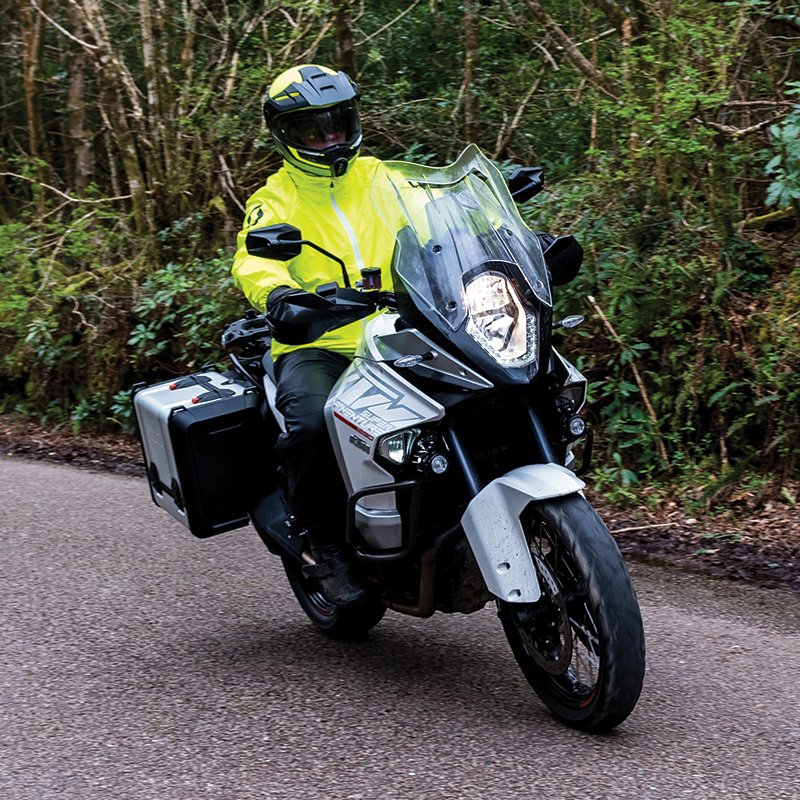
But there is a way to enjoy the benefits of a laminate garment without having to accept the downsides of a laminated garment. And that is to invest a few quid in a set of waterproofs. A drop-liner garment will reach its level of incompetence only in certain circumstances. But put on a waterproof in those rare circumstances and you will create a garment that performs even better than a laminate. Whether you are riding in the rain for four hours or more, or whether you are commuting into work, when you take the waterproof off, the jacket (and/or pant) beneath it will be bone dry. Even drier than a laminate one would have been.
The way we see it, this is the thinking man’s way of addressing the issue. Enjoy all the benefits of a drop-liner suit. Buy a waterproof. Wear it when the circumstances demand, and you’ll enjoy all the benefits of a laminated one. This way you can enjoy the the best of both worlds!
Laminated motorcycle gear is the best solution for some, but it is not the best solution for everybody. Far from it! And the truth is that most people who think they need a laminated suit would actually be better off in a drop-liner one.
Share this story
































































